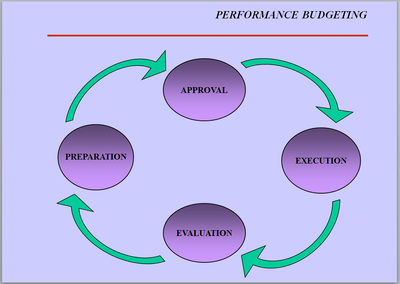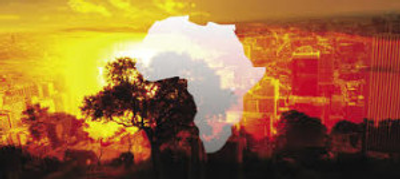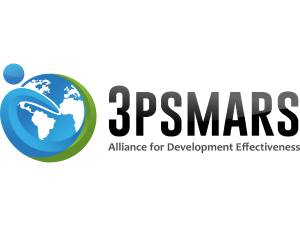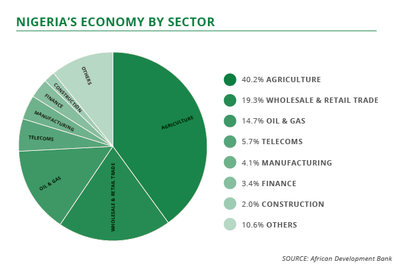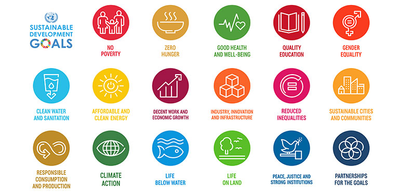The New, the Many, the Connected and the world of FROG, GEOpolity and JAZZ: Revisiting Global Development Scenario in the SDGs Era
By Aderemi Oladele
Almost three years after the adoption of the Agenda 2030 for Sustainable Development and while countries and the UN are trying to work-out strategies for a significant achievement of the SDGs come 2030, my researcher instincts have continued to ponder some of the theoretical predictions that guided global actions in this direction thus far. I mean the engagement of scenarios which foresaw and shaped a word of interconnection which, little by little, set the pace for the present reality in the SDGs dispensation. And which, to my conviction, remain valid.
What informed this write-up are the obvious questions of “to what extent have scenarios played out? “How accurate can we say the predictions were in the realms of global development”? And what potential inferences could we draw during SDGs implementation process and after.
To refresh, scenario building is a method used in long term studies of development activities, trends and programmes. The studies sometimes are aimed at knowing the trends in the evolution of societies and cultures over a long term, aiming at the assessment of fundamental problems in relations to the culture of industrialised countries and at the perspective elaboration of actions for sustainable development (positive and negative effects of current decisions and the need for continuity in action)[1]. This kind of vision has been said to enable planners and decision makers to free themselves from a short-term perspective on decision regarding problems and the solutions linked to different circumstances surrounding a particular issue[2]. The figure below paints a good picture of the setting and types of scenario in management.

The World Business Council for Sustainable Development (WBCSD) describes scenarios as tools that help to take a long view in a world of great uncertainty; they are designed to reflect the kinds of condition in which we may live. They are therefore not predictions, but descriptions of possible futures, telling stories about the way the world might turn out tomorrow, stories that can help us recognise society and adapt to changing aspects of our present environment. It is all about making choice today with an understanding of how they might turn out. Of the many possible scenarios that could be constructed in response to the challenge of development, all begin with three pre-determined elements: the new, the many and the connected. These are the driving forces that shape the global environment that will persist in any scenario.
When talks on globalization and alternative perspectives to human development dominated in international development scene, the WBSSD coined the theory of “the New, the Many and the Connected” in the late 1990s, as elements or driving force that predicts, three distinct scenarios I am going to discuss further down. In the world of “the New, the Many and the Connected”, social and technological innovation lead to the creation of many new products and processes, and these will inevitably affect sustainability. Biotechnology, for example, offers an astonishing array of new opportunities and ethical choices. The Grameen Bank, which pioneered micro-credit agencies in Bangladesh, promised to have as great impact on people’s lives there as any development in technology. Even more, the synergy of these innovations interacting together will change our world in ways we can’t predict.
The New – Rapid Technological Innovation and New Actors in the Global System
The information technology revolution, a driver of what is often called the “fifth wave” technology, was only in its very beginnings in the 1990. Social and technological innovations, another important area of the new concerns for the economy, which has an increasing number of new players—new countries entering the global trading regime; new businesses; new partnerships among established businesses; non-governmental organisations (NGOs), which will assume a greater role in public debate and decision-making; the media, with its enormous power to sway public opinion, especially where emotions are high; and the unpredictable outcomes arising from many of these players interacting together in new ways. At that time, we were widely aware that our day-to-day decisions have the power to destroy our own habitat.
In a nutshell, the New refers to those trends whose reality of existence and entrance into the contemporary day- to-day life of people became a major awareness as from the later part of the 20 century, and which, by their proper, definition constitute a challenge to human development, for example, technological innovation that leads to rapid increase in communication outreach which manifests partly with the widespread access to the internet brought with it increase cross-border interaction and trading system, an issue that still raise questions today as it is difficult to clarify who controls what and to what extent ethics is practiced in trade and technological development.
Other realities such as the inter-linkage of the use of the environment and its relationship to poverty and, as the report of the World Commission on the Environment and Development made us to understand, the many risks attached to our action or inaction to such realities[3]. The advent of new actors in the international scene is another of such “new’ phenomenon, NGOs and civil society organizations and the translational companies were seen to be taking active part as major actors in the international scenario, this constitutes an issue as meeting up the challenge of development as seen then would mean putting in consideration the new entrants as they could be called. IN a nutshell, multiple elements whose adverse effects, positive manifestations as well as vivid importance manifested greatly in the world development reality that human awareness were being brought to their effect as from then on followed by concerns for moderation and ethics in approach to the use of science, information and human ingenuity.
The Many — Population Explosion
This scenario speaks of demography and need for preparedness for the building explosion. It is a reality now that in the next 50 years, the world population will population will increase from the present 6 billion to 9-11 billion[4]. Material consumption will grow substantially, putting an enormous additional strain on already stressed ecosystems. This increase in people is accompanied by an increase in the diversity of the actors who influence how our societies and economies are shaped and what decisions we make.
This dwells on the awareness of a world population explosion in the sense that more questions are asked in the early 90s which borders on such issues as: how many people is the earth able to sustain?[5] The irony in this is that as population increases, causing in itself an increase in resource use, human ingenuity in invention and industrialization is increasing as well the exploitation of the environment, while at the same time such invention need also rooms for their bye products.
Demography, not least in the concern of international development experts, again was part of the awareness of the new development realities, and as the WBCSD puts it, the world is likely to count on a 9 to 11 million people in the next fifty years, and the more we grow, the more the strain on the already fragile environment. It then constitutes an issue, one of the bases for intensified action in human development effort which brought about the now 21st century struggle to save the planet earth.
The Connected – Interconnectivity Spurred by Communication and the Interrelations of Global Development Challenges
In describing the third element that predetermined the scenarios, the WBCSD had this to say:
“We are connected more closely and in more ways than we had previously realised, both to our fellow human beings and to the environment of which we are a part. As the power of our technology grows, as our communication infrastructure develops, and as our economic systems become more inter-dependent, we are creating a global “technosphere” to rival the global ecosystem. Its components are linked together in a myriad of different inter-connections, so that what happens in any one area has the potential to affect many others. At the same time, this technosphere relies completely on the global ecosystem to provide the natural resources it uses and the sinks for the wastes that it produces”[6]
The extent of our inter-connectedness has changed the speed with which knowledge is transferred and problems are perceived—but not the speed with which these problems are solved. Social decisions are mediated by institutions that were designed for a slower, more methodical approach to solving problems, and these problems were assumed to come one by one. Now our problems seem baffling in their interlinked complexity, and the slow and insufficient response of our institutions leaves many people feeling frustrated and disillusioned.
Disillusion Spurred by the phenomenon of ‘the new’ with the fact that, more than ever before we were having the impression of living in a global village where knowledge and information are easily transferable and the reality of human development crisis caused by human activities by human activities on its own home in the use of its endowed natural resources to promote economic growth and technological innovation for ease of life seems to be looming.
These three elements explains the basis for the international development reality as it is seen up till today; it synthesises the interaction between the causes and consequences of human activities which has direct and indirect effects on its development. Positive, or negative, depending on which perspective one looks at them, these realities in a chain-wise manner is so connected to each other that any attempt to resolve one must put into consideration every other elements. For example, it has been said that to eradicate poverty, a growth in the economy of a country need to be consistent, however a total concentration on raising the level of economic growth without proper consideration for ethics could result in another development crisis as will see later in this study. This shows the subtlety and close linkage of these issues to the extent that simultaneous actions are needed in order to achieve real impact ion development.
It is not surprising therefore that this awareness have caused today a totally different approach to managing development, more so, as we have recorded crisis come in flocks in an overlapping manner while the institution we have been building over the years were based on a one-by-one approach to solving problem.
In the three assumptions of the New, the Many, and the Connected, the New represents the fact that human ingenuity will persist and that new discoveries will lead to new developments like advanced technology. The Many signifies the persistent increase in population and the number of actors in the international and local scenes. And the Connected, the close connectedness and integration of human beings in the ecosphere as well as intertwining nature of the challenges that surround us. All these boils to the fact that no one is a bystander but a part of the earth’s system. It also foresaw the now established approach to international development management, which birth the SDGs and a single, coherent and integrated development policy. These three elements also being driving forces that shape the global development environment and will persist in any scenario, they formed the common starting point from which the three scenarios emerged-and then diverge.
The FROG, GEOPOLITY AND JAZZ Scenarios: Jazz Took the Trophy
The first scenario describes the world of FROG (First Raise Our Growth), where many nations experienced a degree of economic success and most of them express major concern for economic growth and see sustainable development as important but not pressing. The civil society continues to press for the enforcement of standard set by the global summit, developing nations will continue to argue that if developed nations insist on raising environmental standard, they should First Raise Our Growth. Developed nations would respond in uneven ways, sometimes by offering help to the developing ones, sometimes by raising FROG cries themselves.
Here people value sustainable development but it is not top priority and the major actors in the movement remain governments and the civil society who are crying in the background for environmental and social standards. Here the economic myth (refer to it) prevails, with little concern for environmental and social values.
The second is the GEOpolity scenario which begins with a succession of signals – some real, some imagined – that an environmental and social crisis looms. The prevailing economic is increasingly viewed as dangerous and narrow. And because many institutions, especially governments, have lost credibility as problem solvers, people expect something from new centres of power which is multinational companies. But the business sector would seem unable and unwilling to respond adequately. Business is therefore not trusted, and in some cases, because of its prevailing narrow economic interest is seen as hindering solutions to the problem. Its actions are not coordinated on a global level, and it seems to lack the will to address the problems. Because neither government nor business is effective in providing the leadership, people begin to look for new leaders and demand new social institutions.
The perceived need for strong and certain responses leads to a new global consensus that welcomes technocratic solutions, sanctions and more direct control of the market to ensure that environmental values and social cohesion are preserved. People would look for new global institutions in the absence of government and business to solve problems. Such global institutions as the Global Ecosystem Organization (GEO) would be opted for as they have road powers to design and enforce measures to protect the environment and society, even if doing so requires economic sacrifice. Thus in this scenario, the society would tend to denounce economic progress and would opt for ecological and social concerns without weighing the consequences.
The Third is the Jazz scenario where diverse players would join in ad hoc alliances to solve social and environmental problems in the most pragmatic way possible. The keynote of this scenario is dynamic reciprocity. It is a world of social and technological innovations, experimentation, rapid adaptation, much voluntary interconnectedness and a powerful and ever changing global market. High transparency would be an enabling factor where there would be a widespread availability information about ingredients of products, sources of inputs, company financial, environmental and social data, government decision making processes, and almost everything else consumers want to know. Many players would be involved, and the stage itself is characterised by a global free market and sound value systems.
Governments would be involved mostly at the local levels, as ad hoc institutions would arise to solve particular problems. Agreements would be reached through mediations and ecologically compliant behaviours would be rewarded. Achievement of the new environmental and social standards would occur largely out of self-interest and the public would be made aware of transgressions and quickly act against companies that violate standards.
In this highly competitive and interconnected world, business would see strategic economic advantages in being perceived as environmentally and socially responsible and many would become pro-active leaders in responding to social and environmental challenges. Thus the Jazz scenario is a world in which NGOs, governments, concerned consumers and business acts as partners along with other players, they learn effective ways of incorporating environmental and social values to market mechanisms. It is a scenario of cooperation between actors of the society to promote economic progress and preserve social cohesion while protecting the environment within a streamlined market mechanism and strong social and cultural diversity awareness framework.
As slated, the early part of the Jazz scenario which is placed between 2000-2010, people will value environmental best practices but will somehow consider it as inferior to economic progress that will rate second on the Agenda. The year 2010-2020 will bring us to a transparency revolution where company’s credibility will be equal to a commodity and will have a selling value, meaning that companies with less environmental and social credibility would have a hard time competing.
The year 2020-2030 will see the society placing price on resources and waste emissions with the gradual movement into market mechanism regulating sustainable development as best practice for industries. And the last phase, which would be between the year 2030 and 2050, will witness the exchange of market for sustainability. At that point, for businesses, having a share of the market would depend on how sustainable a company is, and best practices in environmental and social endeavours will represent a core competence for businesses.
By then it is assumed that the world will be having highly informed consumers and elastic market mechanism that reacts quickly and progress along with sustainable development practice. Since there are going to be diverse players and the competition is going to be intense, the winning enterprise would be one who is able to take environmental and social matters as competitive issues and would recognise that sustainable development is the business of business, which is greater than business itself. In the same vein the winning government will be a government that recognizes the need to foster cooperation and partnership as well as encouraging leadership by responsibility with a solid believe in people oriented approach to state and development administration. Under this scenario, practical approach and a critical assessment of reality matters. People, governments and organizations will no more do things as a matter of precedence but out of a genuine willingness to effect change and improve on human development with clear vision of end results in the living standard of the common man.
The exigencies that led to the Agenda 2030 for Sustainable Development, its universal nature and results framework; as well as the reality of interaction and interconnectivity of global challenges that brought about an integrated Agenda that leaves no one behind, is a reflection of the “JAZZ” scenario which carried the day. We have moved gradually from the world of “FROG” and “GEOpolity” to a combination of the two with a JAZZ resolve. Not only is an environmental concern gradually predicting business success, their level of social responsibility has widely become a factor.
Governance and public sector reforms in countries and reforms in the UN have and will continue to be hall-marks in a JAZZ scenario. And towards 2050, awareness will continue to grow on universal development action that warrants continued innovations, results-orientation and ad-hoc alliances, as well as actions for the common good of all world citizens, either developed or developing.
To conclude, the vision of « leaving no one behind », the universal, rather than global nature of the Agenda 2030 for Sustainable Development and the fact that the combination of 17 Sustainable Development Goals (SDGs), their 169 targets and about 230 indicators are pointers to a word of connection and JAZZ, where the intertwining nature of development challenges had spurred intertwining solutions and mutisectoral simultaneous action to solve the pressing needs of humanity has become a norm in international development.
The overwhelming policy coherence across board and across sectors for economic growth, poverty reduction, environmental mitigation and management, cultural harmony and peace building, with fresh water solutions and all-inclusive governance and leadership partnership within the framework of the SDGs, fit perfectly the prediction of a JAZZ scenario. According to a UN report, “the breadth of the Agenda and its level of ambition attest to the challenges of our time that are of concern to countries and people everywhere. Member States spent several years analyzing information and negotiating positions to create this common framework, complemented by the most inclusive multi-stakeholder consultation process in the history of the United Nations. As a result, just six months after their roll-out, evidence abounds that the SDGs are coming to life. Countries around the world are aligning their national development plans with the new goals, responding to the needs of an integrated and indivisible agenda”.
Until new research findings bring-up new propositions on what will drive development after 2050, our focus on 2030 reveals more of the viability of a world of JAZZ.
—————————————————
[1] Se e UNESCO (2000), Change in Continuity-Concept and Tools for a Cultural Approach to Development, UNESCO Publishing, p.132
[2] Thomas Larssonn (2001), The Race to the Top: The Real Story of Globalization, Cato Institute U.S.A.
[3] Fo r further reading see “Our Common Future”, report of the World Commission on the Environment and Development, 1987, Oxford University Press.
[4] Se e the World Population Forecast at World Mapper, the world as you have never seen it before:
[5] Qu ote taken from Isaac Asimov comments on global scenario for sustainable development, the World Business Council for Sustainable Development, 1997.
[6] Qu oted from the WBCSD Global Scenario Challenge : Course Outline. see: http://www.wbcsd.ch/web/course/gsc/web/main.htm
